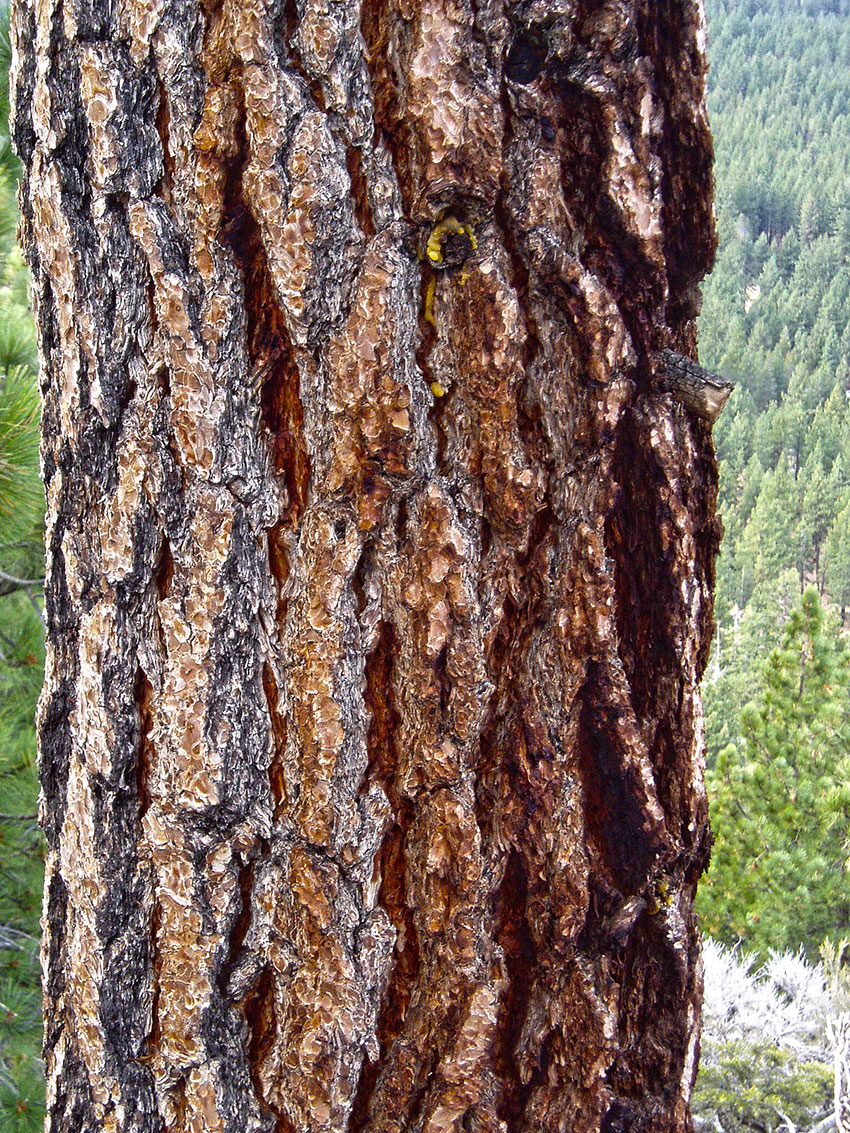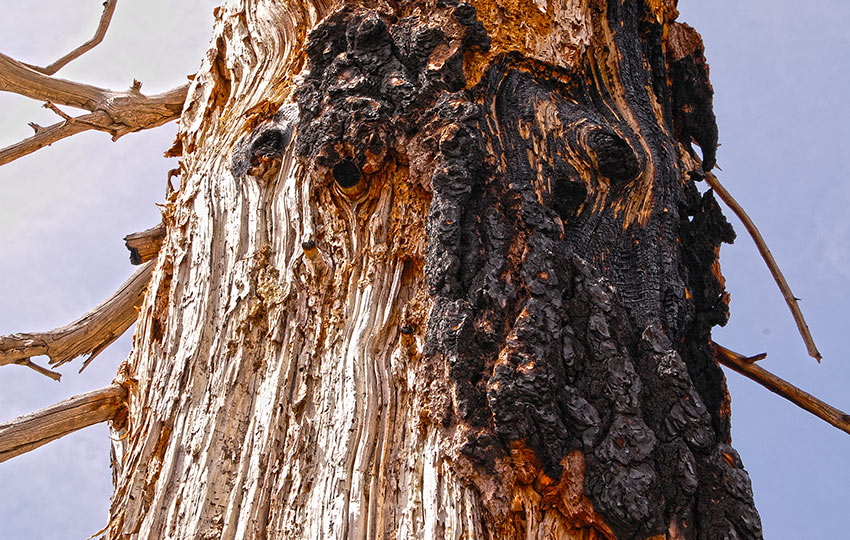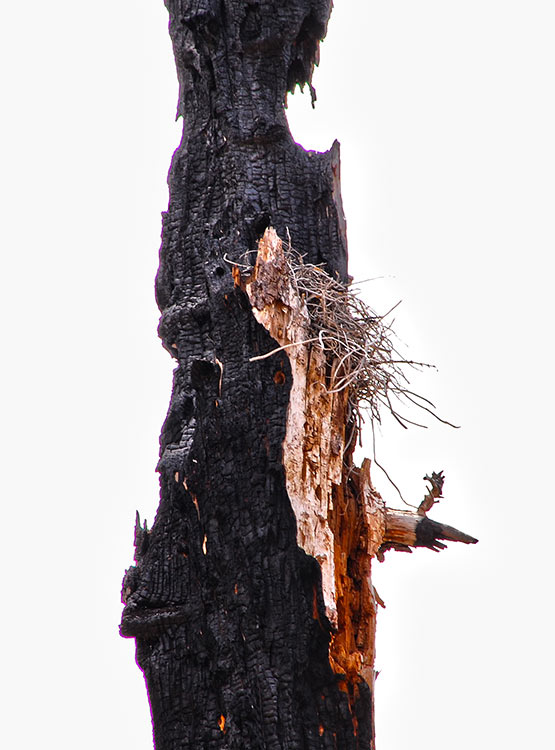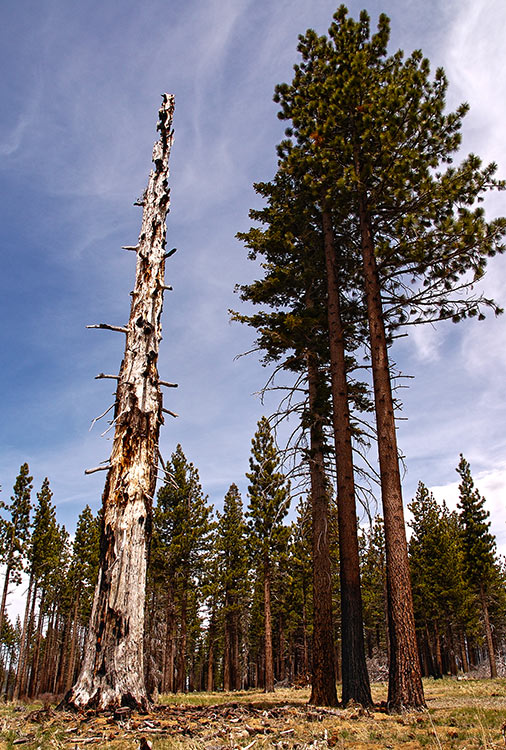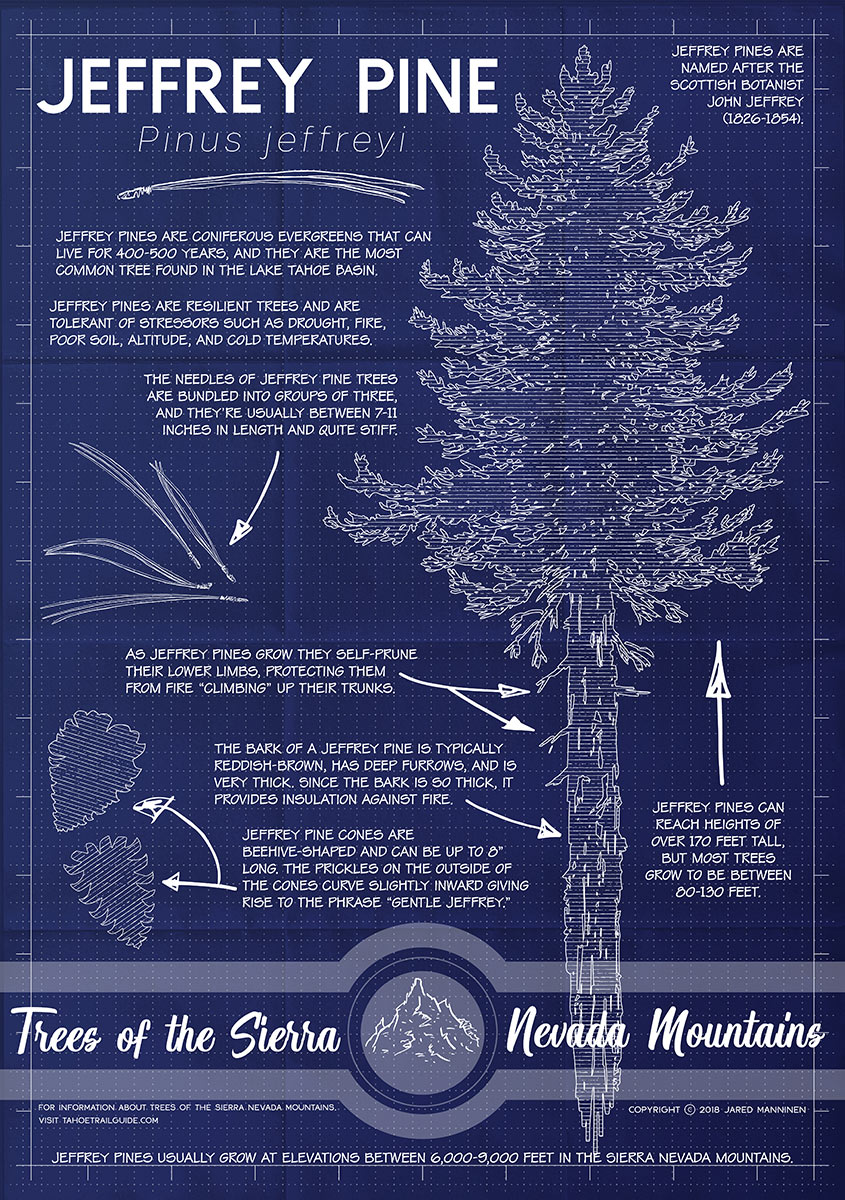
Jeffrey Pine (Pinus jeffreyi) trees are the most common trees of the Lake Tahoe Basin. However, that fact doesn’t diminish their regal beauty and dignified stature. One reason for their abundance is their resilient nature in the face of adversity.
These coniferous evergreens can live for 400-500 years. And they’re tolerant of many stressors such as drought, fire, poor soil, altitude, and heavy snow loads. They can also endure shifts in temperature from one end of the spectrum to the other.
Of all the trees, Jeffrey Pines best exemplify the hearty soul required to thrive in Lake Tahoe’s arduous landscape and climate.
Support Tahoe Trail Guide with a financial contribution via PayPal (single contribution) or Patreon (reoccurring contributions). Your support of Tahoe Trail Guide is very much appreciated!

For people who come to Lake Tahoe for the first time, it’s hard not to marvel at the size, volume, and ramrod straight appearance of Jeffrey Pine trees. Their massive pine cones are also a sight to behold.
I felt the same way when I moved to Lake Tahoe in 2005. I grew up surrounded by dense forest (upper Midwest) for most of my life. However, I recall very few of those forests consisting of such large trees. Not to mention trees that yielded pine cones bigger than softballs!
I quickly learned that these trees were called “Jeffrey Pines.”
Then, I learned that Jeffrey Pines were named after the Scottish botanist John Jeffrey (1826-1854?). He was on assignment by the Royal Botanic Garden Edinburgh (RBGE) to find exotic species of North America trees. In 1852, he collected samples of the pine tree (near Mount Shasta) and sent them back to the RBGE.
Approximately two years later, John Jeffrey disappeared forever.
There’s no evidence of his whereabouts or what lead to his demise, so it’s pure speculation on my part. However, I find it interesting that he was in the same region of California during the Gold Rush. Who knows, perhaps he stumbled upon the claim of some overly protective gold miners…
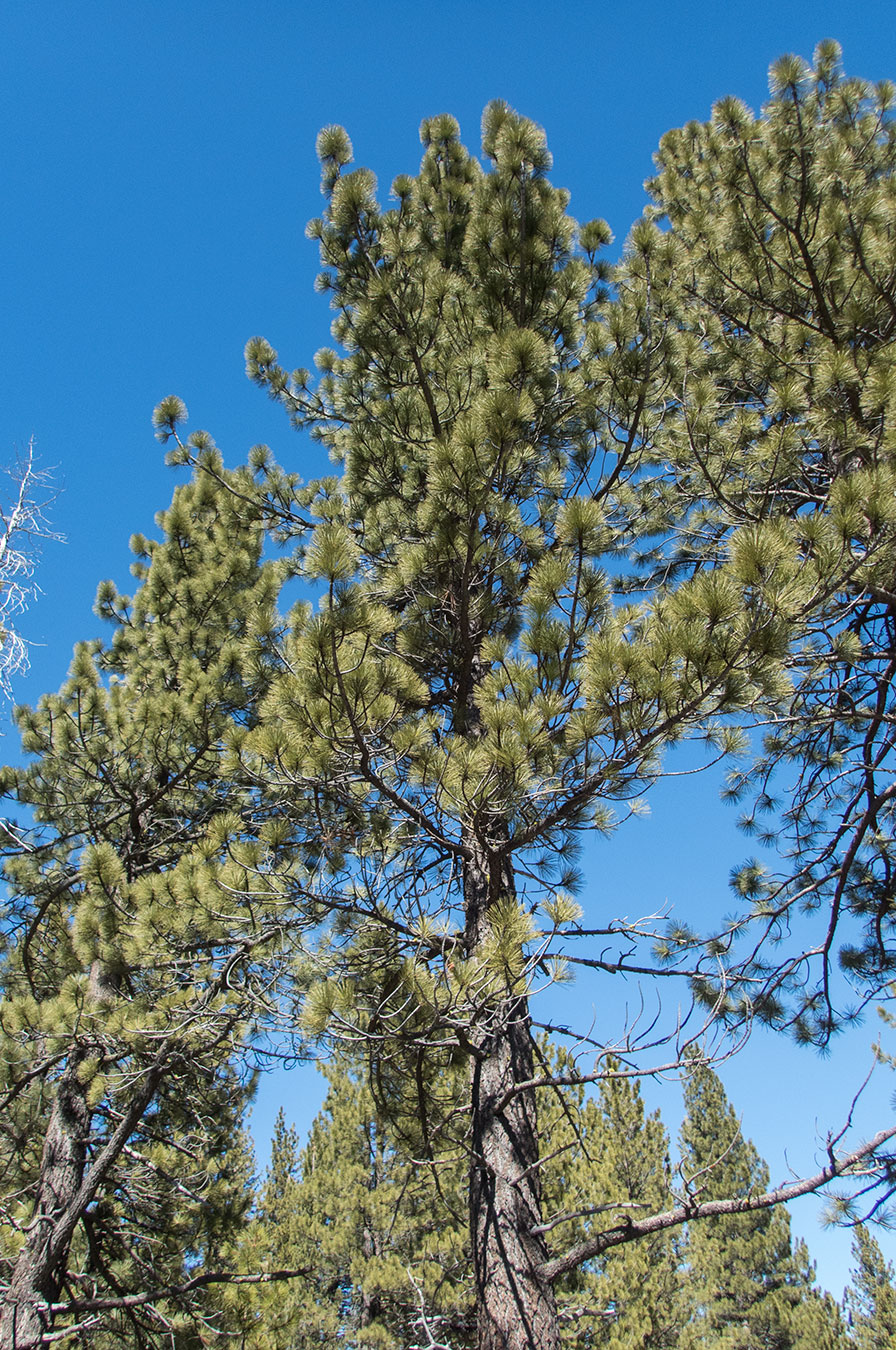
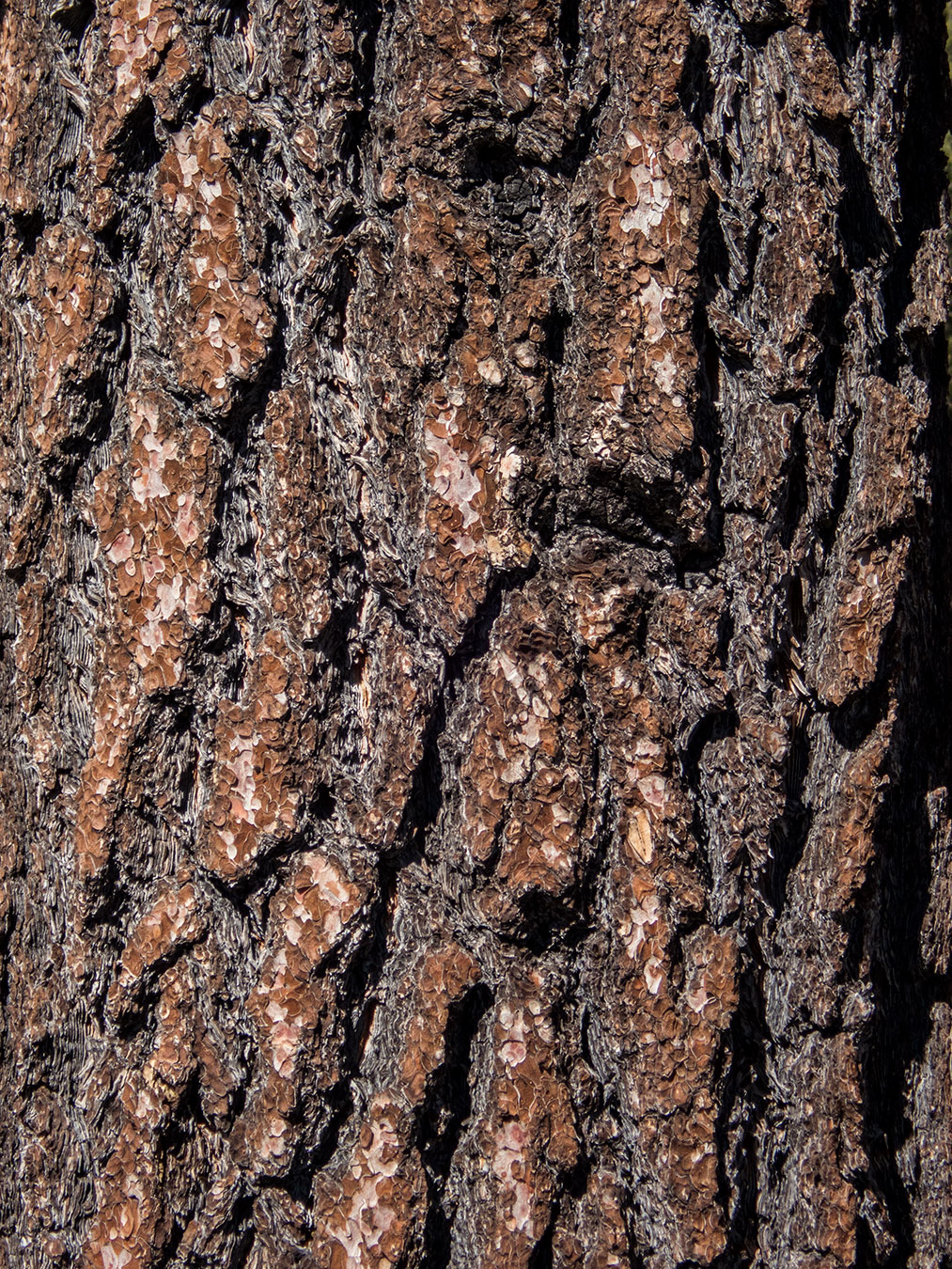
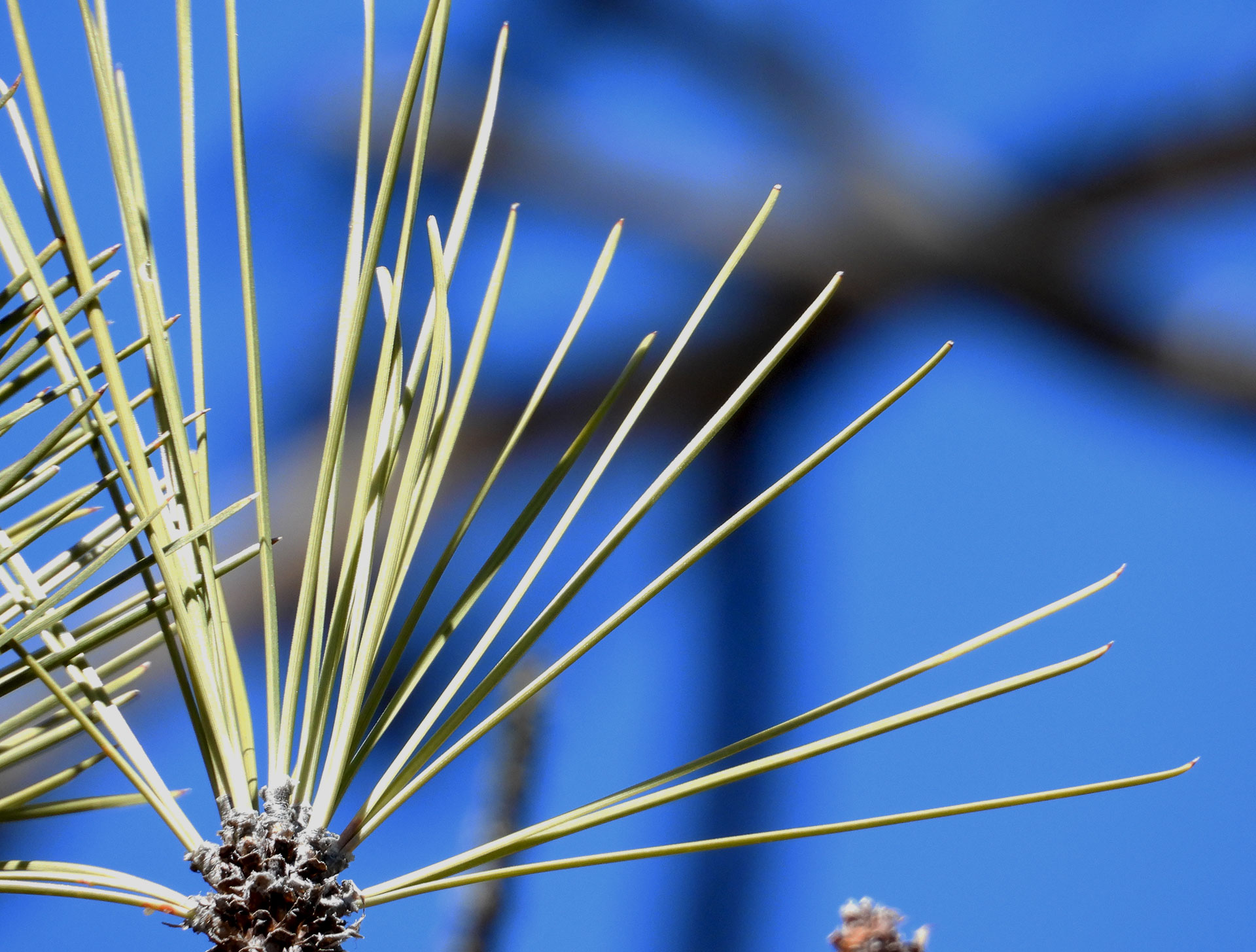
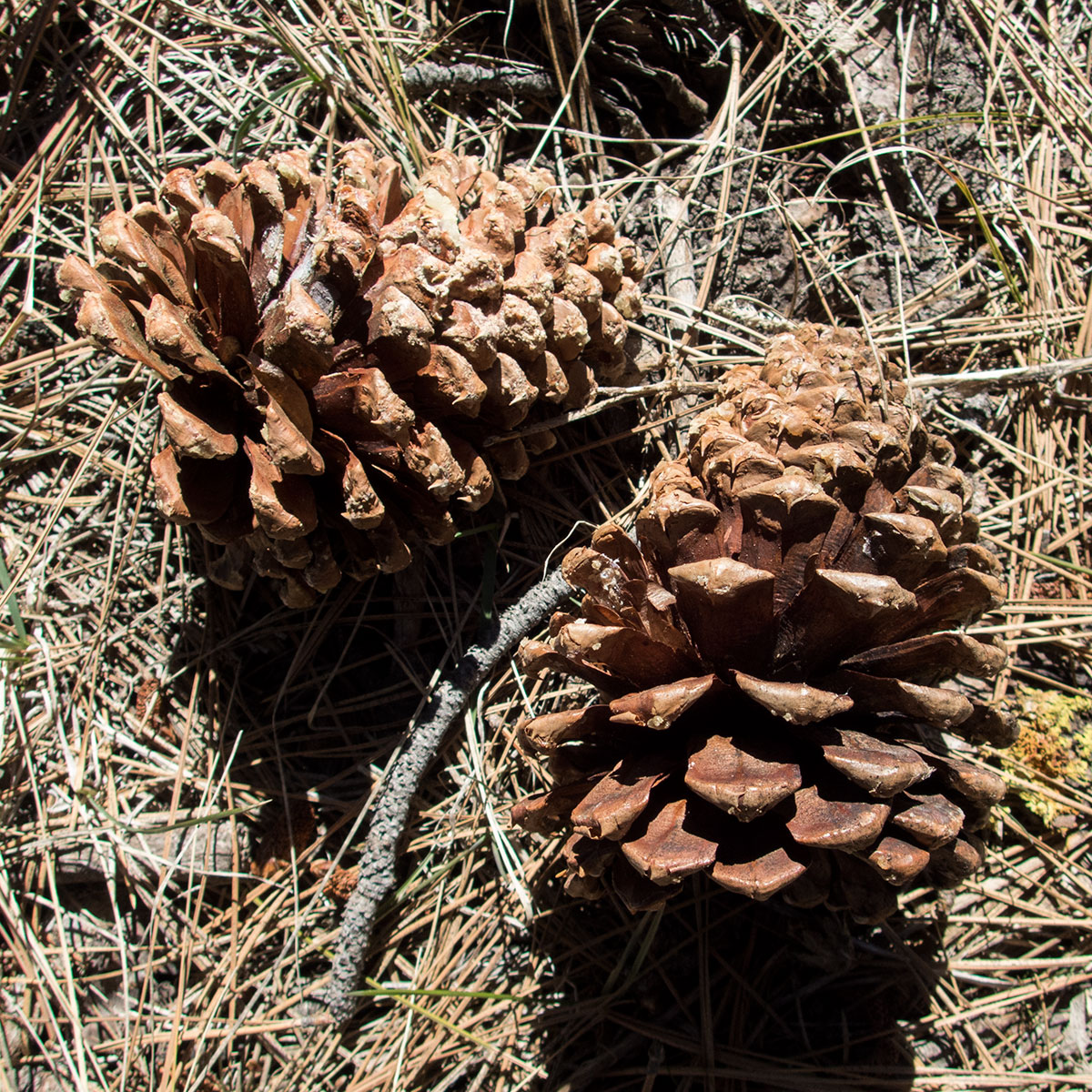
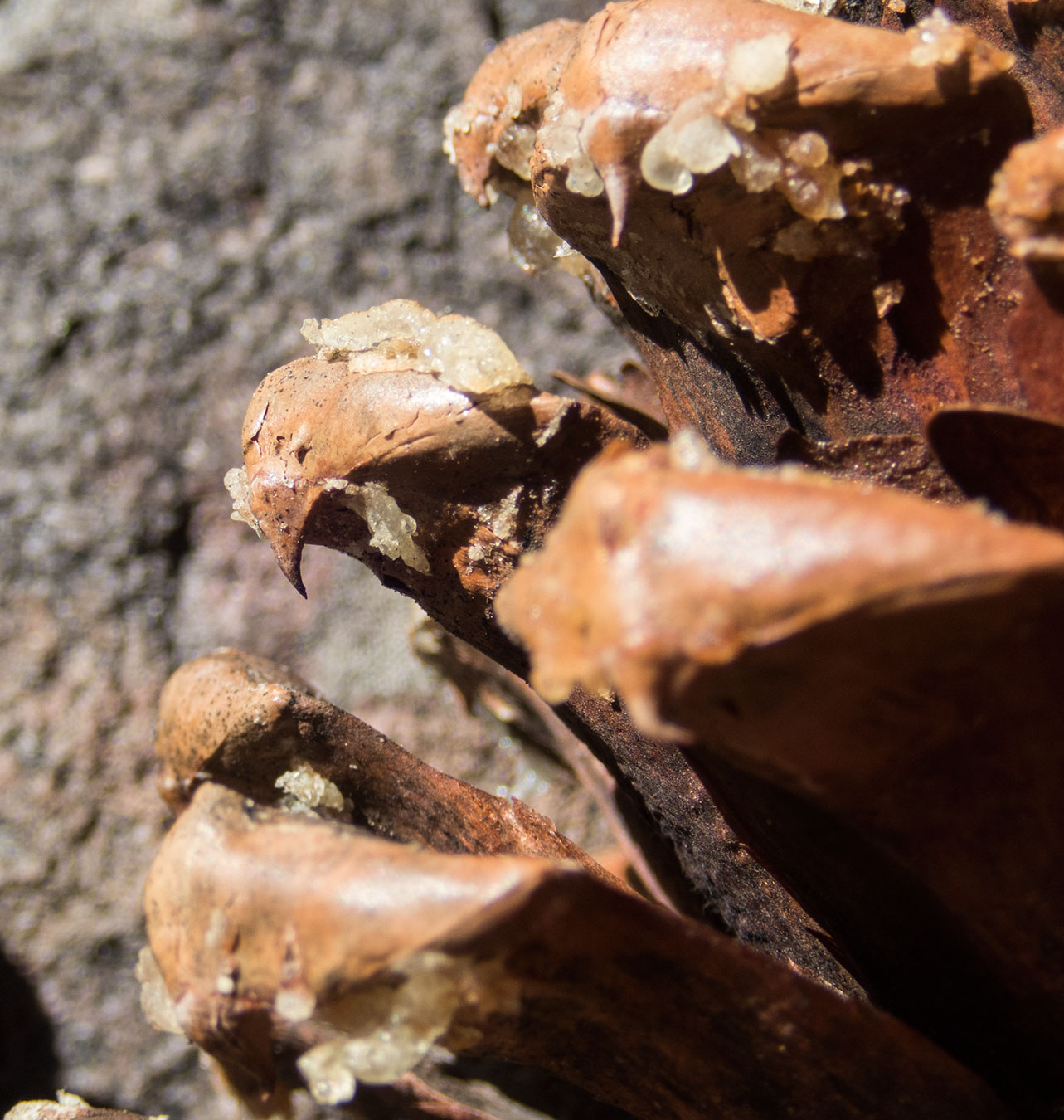
Jeffrey Pine Tree Elevation Range
The average elevation range in the Sierra Nevada Mountains for Jeffrey Pines to grow is between 6,000-9,000 feet. However, the trees can grow at 5,000 feet. They can also grow in elevations of up to 9,500 feet, depending on the conditions.
Jeffrey Pines are found in a greater abundance and at higher elevations on the eastern side of the Sierra Nevada.
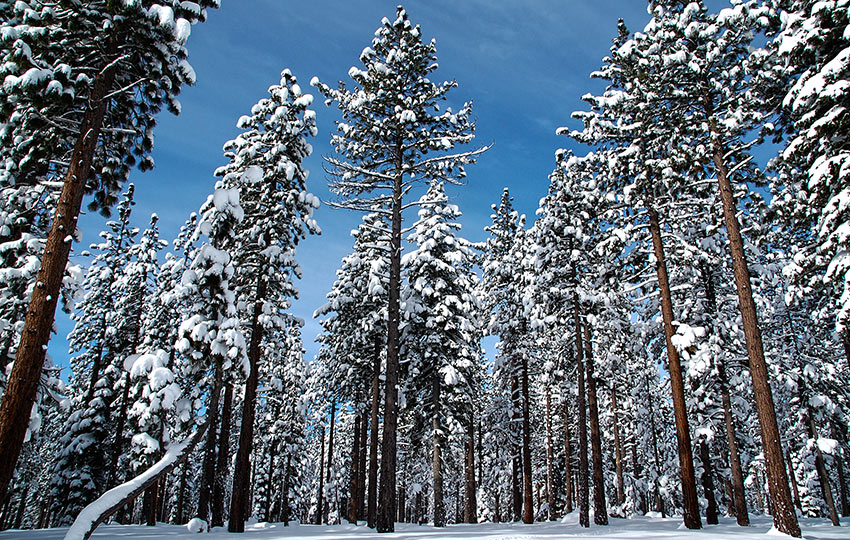
Size & Shape of Jeffrey Pine Trees
Mature Jeffrey Pines can grow to heights of 170 feet or more. That said, the typical range is closer to 80-130 feet. In general, Jeffrey Pines range in girth from 4-7 feet.
Large trees look slightly different than their younger counterparts because their trunks and crowns appear more distinct. Basically, larger trees are typically free from having lower branches.
The reason Jeffrey Pines self-prune their lower branches as they grow taller is to decrease the ability for fire to climb the tree. Incidentally, this also means your kids will have a tough time climbing a Jeffrey Pine!
Lastly, some Jeffrey Pines can exhibit a Krummholz (German for “crooked wood”) form or shape due to exposure. High winds and icy conditions trim away bits of the tree causing it to grown in a twisted manner. This is more typical at higher elevations.
Needles of Jeffrey Pine Trees
Jeffrey Pine needles are bundled into groups of three. Although you can occasionally find them in a random cluster of more than three needles, three is the standard.
The needles are usually between 7-11 inches in length. And, they’re quite stiff. They also form into tufts extending from (and well beyond) the terminal bud of each branch.
The characteristics of these pine needles provide the tree with another layer of fire protection. This is due to the tufts preventing embers from reaching (and damaging) the buds.
On the other hand, during the winter these tufts collect snow and provide fantastic imagery of snow-flocked trees 🙂
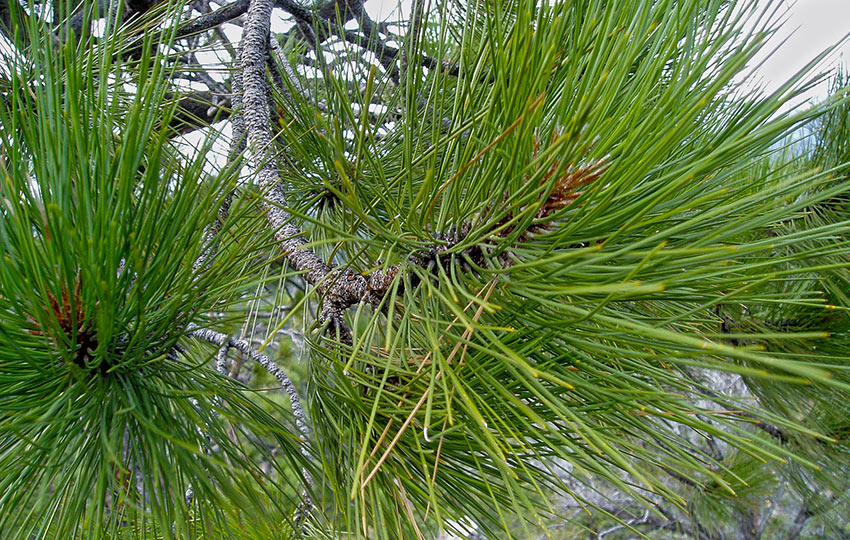
Cones of Jeffrey Pine Trees
Jeffrey Pine cones are shaped similar to a beehive. And, they can be up to eight inches long.
The prickles on the outside of the cones curve slightly inward. So, this gives rise to the nickname “gentle Jeffrey” with regard to picking up and holding a cone.
The widest portion of the cone is actually the top, as this is how they naturally hang from the end of the branches. The female cones, which are the big and woody looking cones, can drop any time throughout the year. This is often condition-dependent (high winds, drought, and tree damage).
Be particularly careful when parking beneath Jeffrey Pines when their cones are still green and full of sap. They have the potential to break windshields and leave significant dents on your vehicle when they fall.
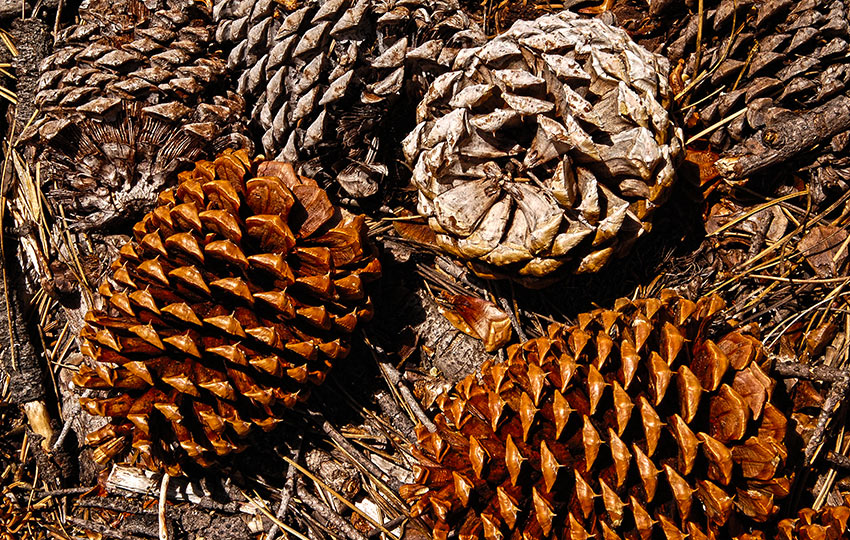
Bark of Jeffrey Pine Tree
The color and pattern of Jeffrey Pine bark can vary to a degree. But generally it’s reddish-brown, has deep grooves or furrows, and appears puzzle-like in shape.
Jeffrey Pine bark smells reminiscent of vanilla or butterscotch after its been heated by the sun.
Because the bark of a Jeffrey Pine is so thick, it acts as insulation against fire. So the inner structure has a good chance of surviving despite the outside of a Jeffrey Pine looking scorched black from fire.
Diseases that Affect Jeffrey Pine Trees
As robust as Jeffery Pine trees are, they aren’t impervious to disease. So you can find Jeffrey Pines that are infected with either Western Gall Rust or Western Dwarf-Mistletoe.
One of the Jeffrey Pines on the property of my first home was infected with Western Gall Rust. This disease appears as a “hip canker” near the base of the tree. It’s a fungus that creates a weak point on the tree by eating away its outer trunk. Consequently, I had it removed so I wouldn’t have to worry about it falling on my cabin.
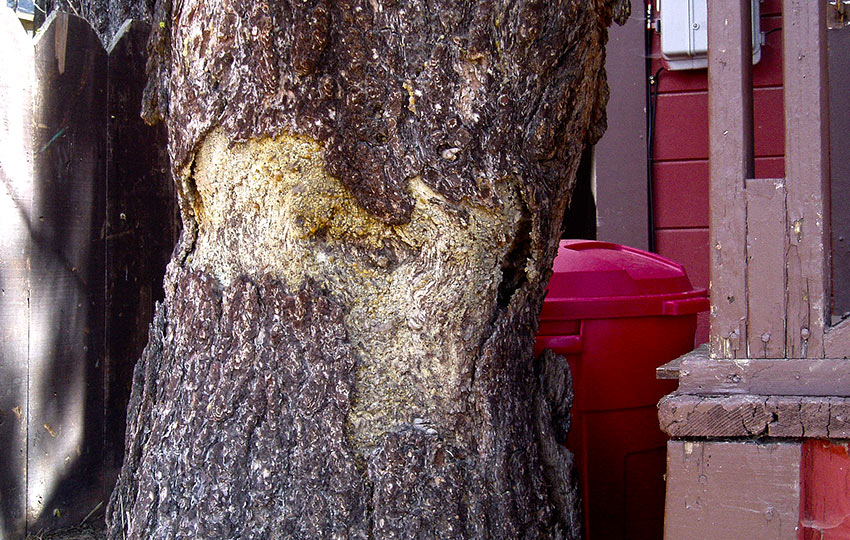
At my second home in Tahoe, Western Dwarf-Mistletoe infected a Jeffrey Pine in the yard. This disease is a parasite that weakens (and can kill) a tree by robbing from the tree vital nutrients. Both diseases can spread to other pine trees.
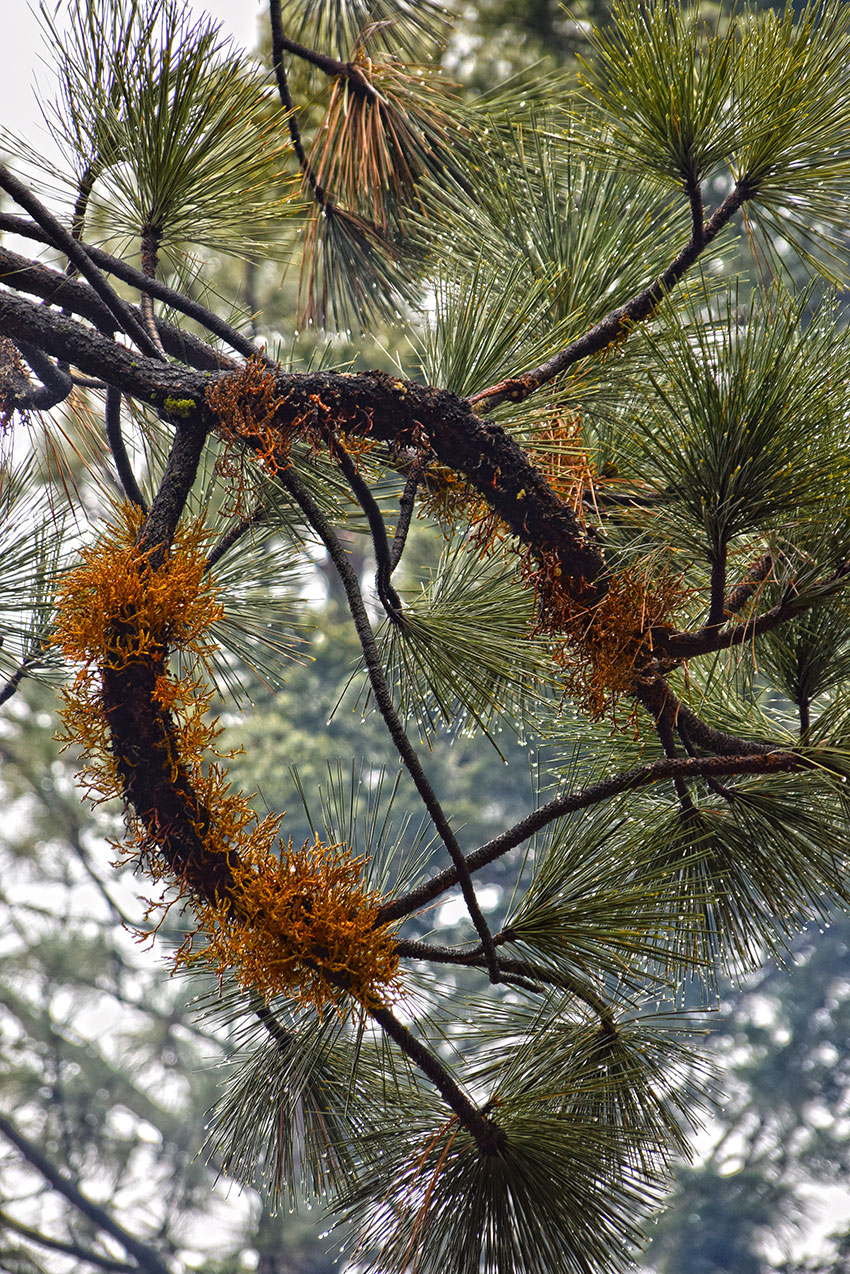
Fire and Jeffrey Pine Trees
Jeffrey Pines will still succumb to fires under the right circumstances despite their many defenses.
In 2007, a major fire ravaged the area just west of Meyers (west of South Tahoe). The fire traveled along Angora Ridge and over to Tahoe Mountain. Unfortunately, the cause of the fire will forever be a secret. However, the most logical reason is that someone hadn’t properly extinguished their illegal campfire (old Seneca Pond).
The Angora Fire lasted approximately a week. It claimed over 250 homes and 75 additional structures, not to mention countless trees, birds, and four-legged critters.
Then, there is the Caldor Fire (2022) to consider when discussing forest fires. The Caldor Fire burned so hot and was transported by such high winds that regardless of natural defenses, Jefferey Pines weren’t going to survive. Drive over Echo Summit toward Placerville and you can see its devastation. You can also see burned husks of Jeffrey Pine trees while driving through Christmas Valley.
Fortunately, the charred husks can make for a new home for various wildlife.
Question of Intention aka Conclusion
Why is it important to be able to distinguish a Jeffrey Pine from a Western White Pine, for example? Well, you got me there.
If we’re going down that path I guess the broader and more relevant question to ask is, “Why is learning anything about nature important?”
I write these natural history articles to share with you entertaining and educational material that’ll enhance your outdoor experience. These works won’t transform you into world-famous botanists, for example. Their scope is relatively limited, all things considered. But they do provide a starting point for your own research. It’s my hope that after answering some basic questions about these big, beautiful, and benevolent Jeffrey Pines, for example, that you’d continue to ask questions.
- Why does it grow here?
- What is its connection to the landscape?
- Is it native or was it introduced to the region by humans (anthropogenic)?
- Or, was it brought here by wildlife?
- How does it benefit wildlife?
- What parts of it are utilized by humans?
- And, can parts of it be consumed or does it have any medicinal properties?
As much as I’d love to be able to answer all of those questions, that would entail writing an entire book. And that’s not really what I’m trying to accomplish here.
Again, let’s just start by taking a closer look at our surroundings the next time we go outside. Because the more we become aware of the flora/fauna around us, the more we become invested in preserving it.
Order my “blueprint” infographic about Jeffrey Pine trees at my RedBubble account. It makes for a great poster!
Best Wildflower Hikes of Lake Tahoe
Please note that this is an abridged list of Tahoe wildflower hikes. There are countless wildflower hikes at Tahoe and it’s simply going to take me time to compile them all. However, in the meantime, this is a start. And please note that those locations without a link are articles I’ve yet to write.
- Winnemucca Lake
- Frog Lake
- Washoe Meadows State Park
- Cathedral Meadow
- Spooner Lake
- Rabe Meadow
- Meek’s Creek
- Paige Meadows
- Tahoe Meadows
- Watson Lake
- Freel Meadows
Articles About Lake Tahoe Plants and Wildlife
The following Tahoe Trail Guide articles feature information, history, and stories about the various forms of plant and wildlife that you can find at Lake Tahoe.
Lake Tahoe Wildflowers
- Two Major Factors that Determine Peak Bloom Times for Wildflowers at Tahoe
- Tips for Finding Wildflowers at Tahoe
- The Sinister Mustard Flower Rust
- Big Yellow Wildflowers with Big Green Leaves called Woolly Mule’s Ears and Arrowleaf Balsamroot
Trees of the Sierra Nevada
Birds of Lake Tahoe
- The Tree Cleaving Pileated Woodpecker
- How Woodpecker Contribute to Healthy Forests at Lake Tahoe (and other fun facts)
